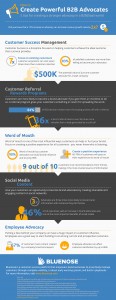“Famous pivot stories are often failures but you don’t need to fail before you pivot. All a pivot is is a change in strategy without a change in vision. Whenever entrepreneurs see a new way to achieve their vision – a way to be more successful – they have to remain nimble enough to take it.” says Silicon valley entrepreneur, Eric Ries
A great idea is valuable. It’s becomes more so when you’ve grown your idea into your own business. That’s why it can sometimes be hard to let go of your original idea and change into something new.
In a startup, pivoting can mean the difference between becoming a success or slowly fading away into nothingness. Although pivoting can be a challenging process, startups have an edge over established companies when it come to flexibility. Startups are hotbeds of change where new decisions and experiments are tried and dropped every day. Let’s take a look here at a few startups that have learnt along the way and applied this knowledge to their business, embracing change on their road to success.
Jet
The product
When Marc Lore launched the e-commerce startup Jet.com in 2015, he envisioned a company that would compete directly with bigwigs like Amazon and Walmart and offer the consumer highly competitive prices. Selling items at breakeven prices meant that the $ 50 annual membership fee would be the sole source of profit for the company.
The failure
The membership fee wasn’t an ideal plan with customers preferring to pay more for products rather than commit to an annual fee. The membership was isolating a large user base that Jet couldn’t afford to lose.
The pivot
A little over two months after launching the company, Lore decided to drop the membership free, the core revenue driver of the company. Jet would have to raise prices to supplement costs but Lore believed that higher prices, sales commissions from site merchants and revenue driven from their proprietary smart checkout technology would more than make up for the losses. The site was still offering products, albeit a smaller selection at prices 4%-5% cheaper than Amazon.
Jet was bleeding money, but now it was slowly capturing the market with more than $ 1 billion dollars in annual gross merchandise sales in its first year. With the recent Walmart acquisition of Jet for $ 3.3 billion dollars, it’s safe to say that Jet hit it big.
The lesson
Startups spend so much attention on capturing the market that their revenue stream becomes second fiddle. A solid revenue model will see the company through rough times and should be established from the start.
Keaton Row
The product
Cheryl Han and Elenor Mak built Keaton Row founded Keaton Row in 2012 as a free personal styling website. The site offered one-on-one connections between a client and a stylist. It enabled women anywhere in the country the luxury of a personal stylist.
The failure
Keaton Row spent its resources bringing in new stylists from across the country to expand their business. The business took off and people loved the product. But Han soon realised that they had very few repeat customers. Their business model was not retaining customer loyalty. With stylists spread across the country Keaton Row could not create the meaningful relationship that would keep customers coming back.
The pivot
Han decided that the business model needed a makeover if it meant to survive the long haul. In a matter of a few months, Keaton Row shrank its network of stylists from hundreds spread across the country to a few full-time stylists based in their New York office.
Since the pivot, Keaton Row has doubled its customer base and according to Han, customers are spending more than they used to. The startup has raised more than $ 17 million in seed funding as on June 17, 2015.
The lesson
Just because your end goal remains the same doesn’t mean that you have to stick to the same path. If your current strategy isn’t working for you, brainstorm new ways to reach that goal. Keaton Row found its way by bringing its workforce in-house. Find out what works for you.
CloverPop

Screenshot
The product
Eric Larson started Cloverpop in 2013 to help people make better decisions. The tool was meant to help people plan out and act on big decisions ranging from “mortgages, business loans and real estate to employment, education, marriage and parenting” according to their announcement. Clover pop made money from their paid-for coaching service and by charging a referral fee if the user became a client.
The failure
The number of people using Cloverpop to make personal life decisions did not grow at the rate Larson had hoped. Users were hesitant to ask personal questions using the app.
The pivot
Larson made the decision to refocus the company’s efforts to the business sector. Changing their consumer audience to a niche sector helped Cloverpop access an untapped market. Business managers were increasingly using the product for major business decisions related to hiring, firing and reorganisation. Larson says Cloverpop has helped roughly 5,000 managers make nearly 20,000 decisions after their business pivot. Cloverpop went on to raise $ 1.8 million in seed funding on Oct, 2015.
The lesson
Your startup may have the right product on your hands. But identifying the right market is just as important. Changing their consumer audience to a niche sector (here:business) helped CloverPop stay on track.
TRNDLabs

Screenshot
The product
TRNDLabs started making their Pokedrone in 2014 to capitalise on the huge fan following for the augmented reality game Pokémon Go. The Pokedrone was a miniature flying drone that paired with your smartphone to make playing the game easier.
The failure
The company ran into some technical and legal difficulties from the creators of the game. The creators as well as a lot of players believed that the Pokedrone was ruining the spirit of the game.
The pivot
Since TRNDLabs could not associate the product with Pokemon Go, they developed a new marketing strategy for the Pokedrone. The company released the first ever affordable selfie drone, The SKEYE Nano 2 FPV. They capitalised on a consumer trend once again, this time the selfie rage, and breathed new life into a product that was all but doomed.
The lesson
TRNDLabs successfully identified marketing trends to sell their product. When their original strategy didn’t fit, the marketing team went out and found a market where their product did sell. If your product is not the right fit for the market, maybe you are in the wrong market.
Bounty to Periscope

Screenshot
The product
Kayvon Beykpour and Joseph Bernstein started Bounty in 2014 to answer a simple question, “Why isn’t there a way to see what’s happening right now, anywhere in the world?”. Bounty let users see what was happening around the world by putting in a location based request for real time images.
The failure
The spotlight was already on Instagram which was the go-to place for location-based images. Bounty was a neat tool, but it wouldn’t be making any waves.
The pivot
Beykpour and Bernstein realised that the only way to make their product big was through video. The newly rebranded video live-streaming app, “Periscope” turned out to be the product that made their dream of – seeing the world through someone else’s eyes – closest to reality. It speaks to their success that Twitter acquired the startup even before they launched for around $ 100 million.
The lesson
A product that stagnates is a product that fails. Businesses have to constantly evolve their products to form a better fit for the marketplace.
StyleZen to Ahalogy
The product
Michael Wohlschlaeger founded StyleZen in 2011 as a fashion shopping site that created a personalised and fun shopping experience for buyers.
The failure
Although StyleZen had a following of loyal customers they struggled to expand the user base.
The pivot
After trying out Facebook and Google ads, Wohlschlaeger started experimenting on Pinterest. He developed a methodology and tools that led to amazing traffic and growth from Pinterest. Realizing the potential of the technology, StyleZen was shut down and the company focused their attention on helping businesses leverage Pinterest as a marketing platform. The company rebranded as Ahalogy has raised more than $ 7 million in funding as on May 14, 2015.
The lesson
StyleZen did a full-scale revamp of their business model after identifying a new arena for growth. Do not be afraid to change directions when you stumble upon a new direction for success.
When you’re running a startup, adaptability is your biggest ally. It does not make sense to throw your money and marketing might at an unyielding market before figuring out if your product is the right fit. “Great ideas” are a dime a dozen in the startup world. Adapting to the tide of consumer preferences and a well thought through implementation strategy are what really matters.
Business & Finance Articles on Business 2 Community(87)
Report Post









